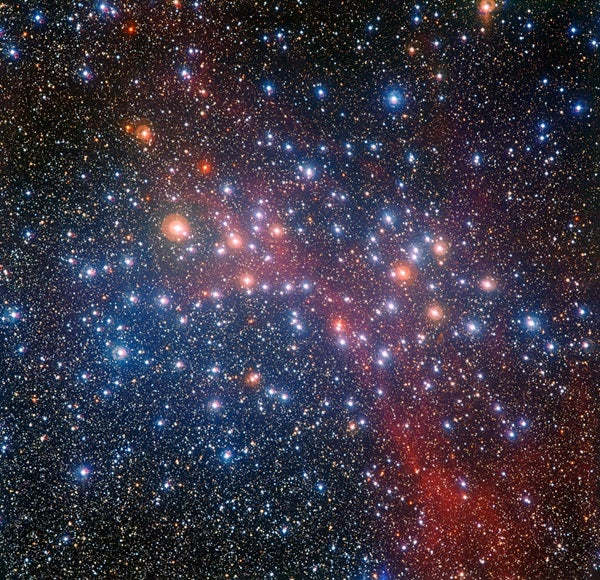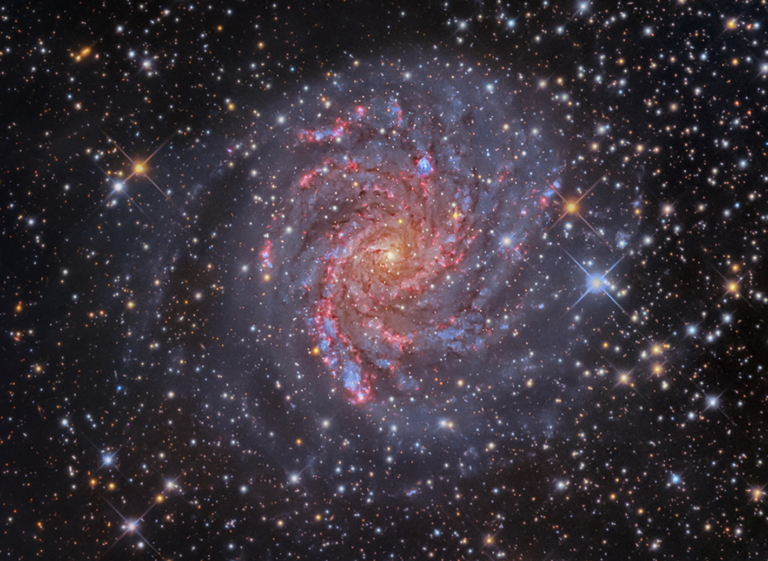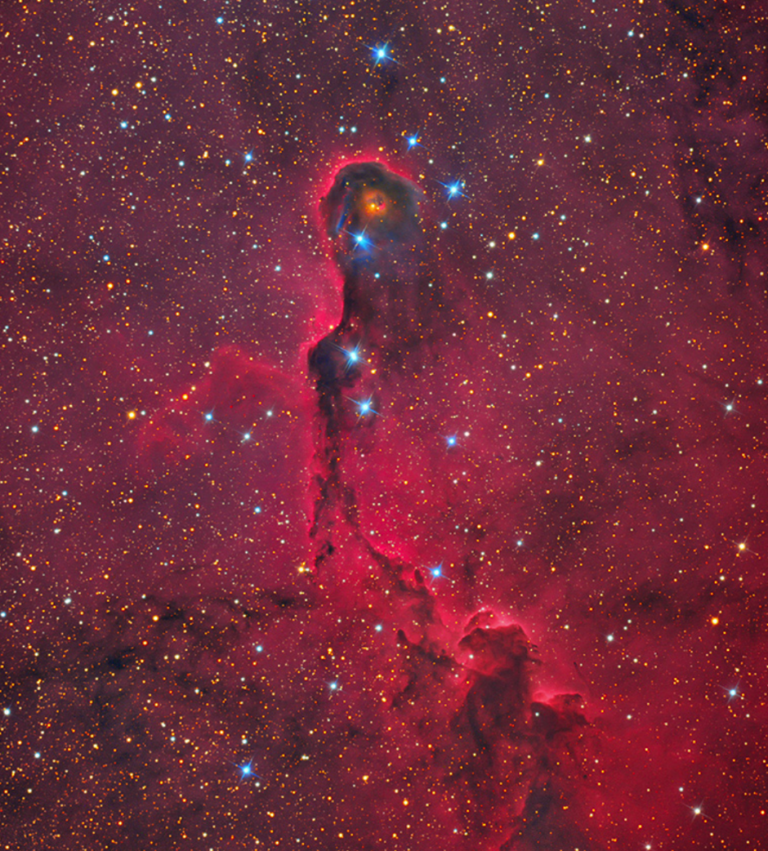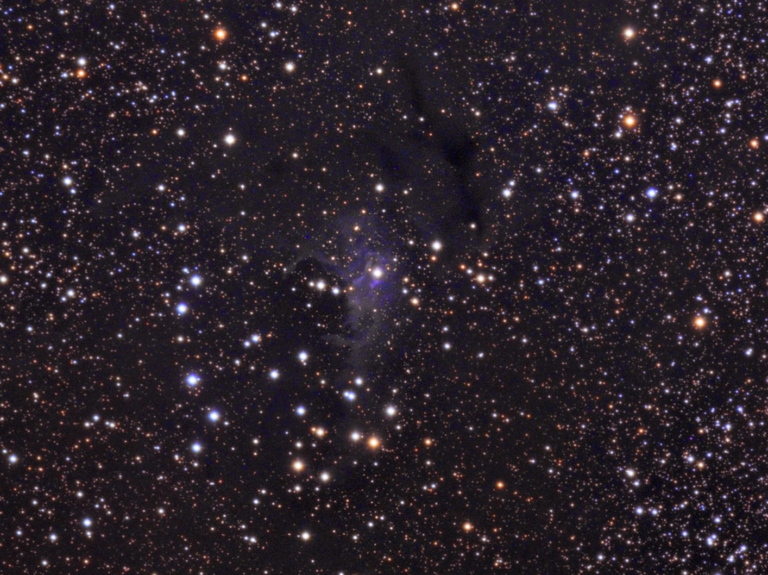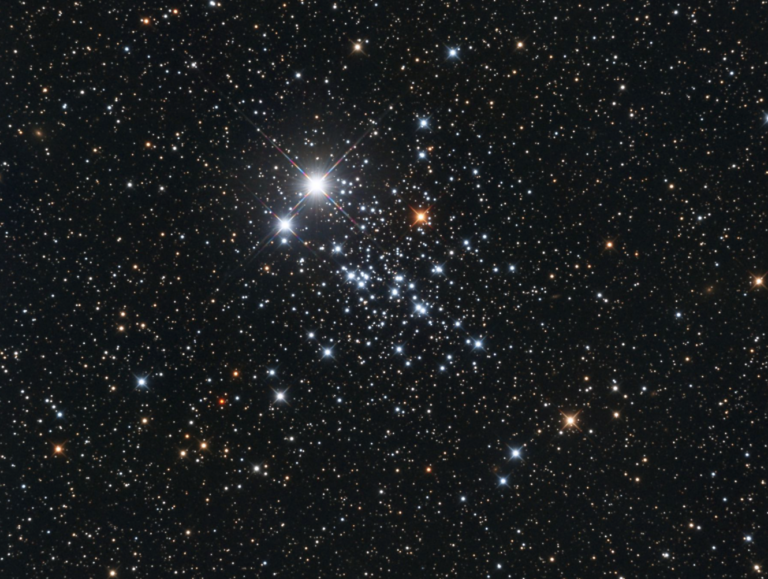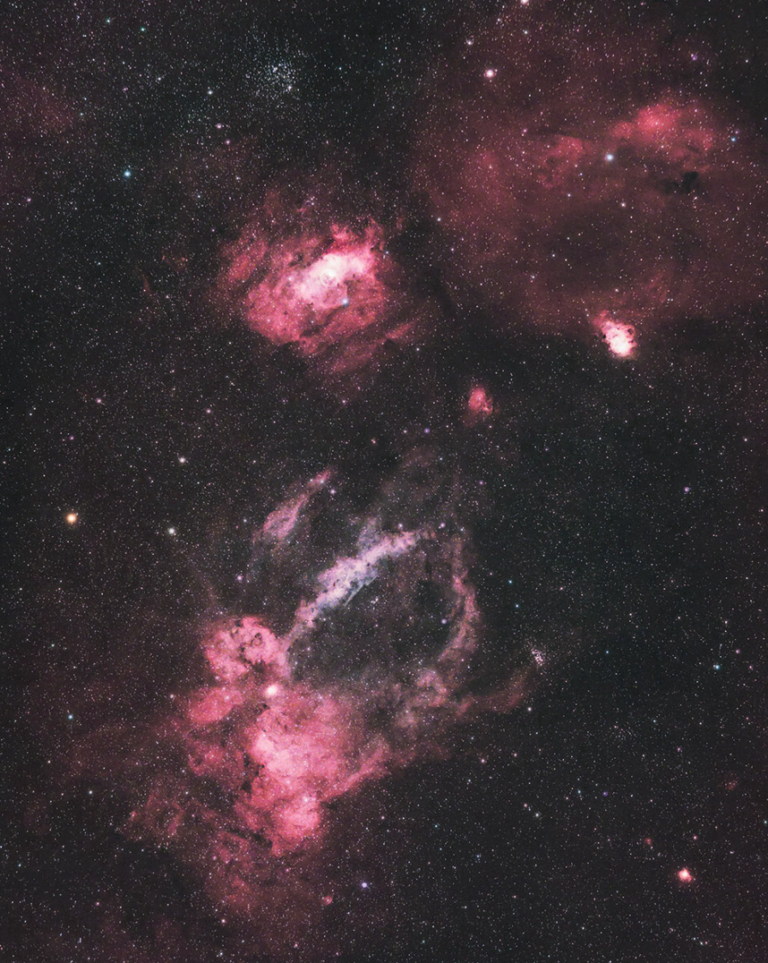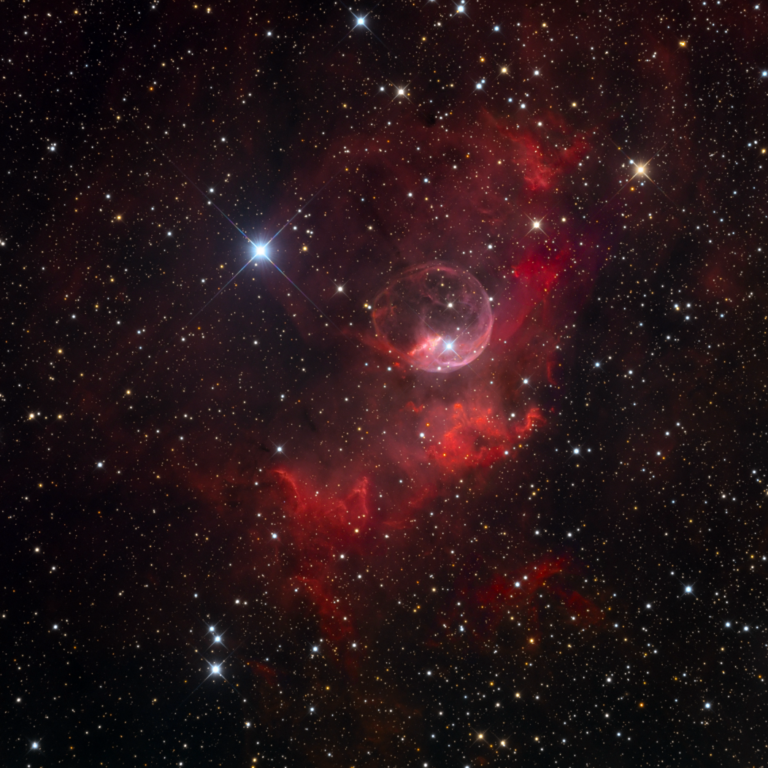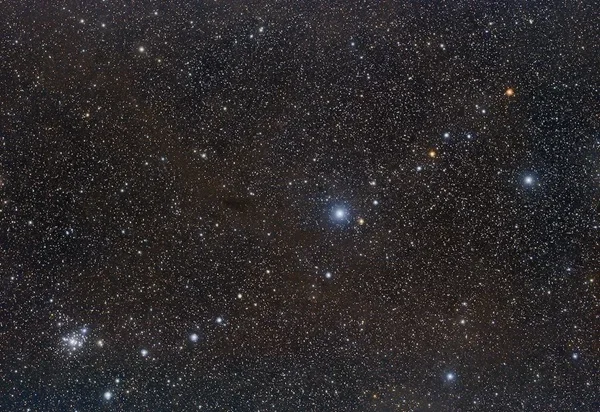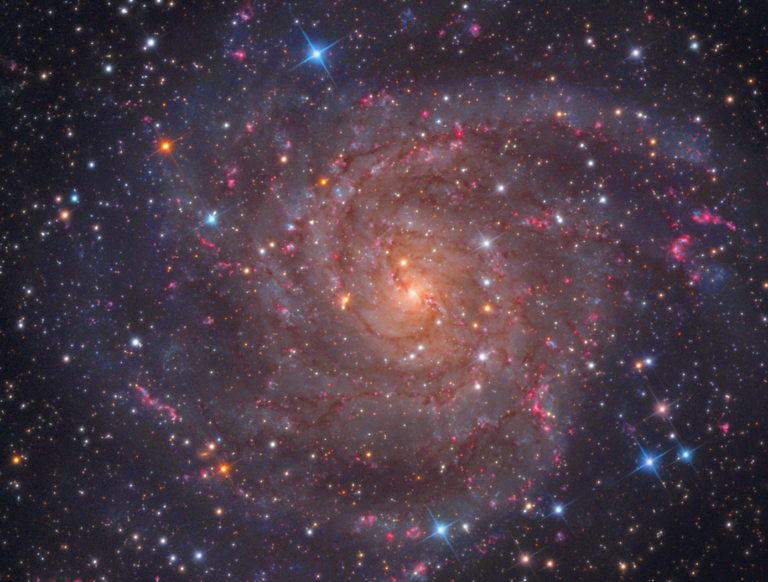If you love common names for deep-sky objects, NGC 3532 in the constellation Carina the Keel will give you all you want. Various amateur astronomers through the years have called it the Firefly Party Cluster, the Football Cluster, the Wishing Well Cluster, the Pincushion Cluster, and the Black Arrow Cluster. More formally, it’s also listed as Caldwell 91 and Melotte 103.
No matter how you refer to it, this fabulous open cluster sits in a gorgeous star field 4.7° south-southwest of magnitude 3.9 Pi (π) Centauri. You’ll see it immediately without optical aid because it glows at 3rd magnitude and it spans 55′. The 150 or so stars NGC 3532 contains, however, are too faint to see individually (averaging approximately magnitude 7.5), so the impression is of a bright glow within the Milky Way.
French astronomer Nicolas Louis de Lacaille discovered NGC 3532 in 1751 through his ½-inch refractor. It was one of many discoveries he made from the Cape of Good Hope in South Africa with this instrument.
A 4-inch telescope with an eyepiece that yields a magnification of 100x will reveal more than half of NGC 3532’s stars. Back off the power a bit, and you’ll see several dark lanes between clearly delineated lines of stars. Go for an even wider field of view and numerous colorful stars will pop into view past the cluster’s tightly packed core. A blue and a deep red one lie at the cluster’s northeast end. The blue star is SAO 238839; its red counterpart is SAO 238855.
A bit of interesting trivia connects this cluster with the Hubble Space Telescope. On May 20, 1990, NGC 3532 became the first target imaged by Hubble’s Wide Field and Planetary Camera. Well, not the entire cluster — the shot captured a region of sky near the magnitude 8.4 star HD 96755 that measured only 11″ by 14″, which is a minuscule 0.006 percent of the area occupied by the whole cluster.
Make sure to explore Astronomy’s full list of 101 cosmic objects you must see. New entries will be added each week throughout 2022.
To get the latest astronomical news and observing content delivered directly to your door, subscribe to Astronomy magazine today!

